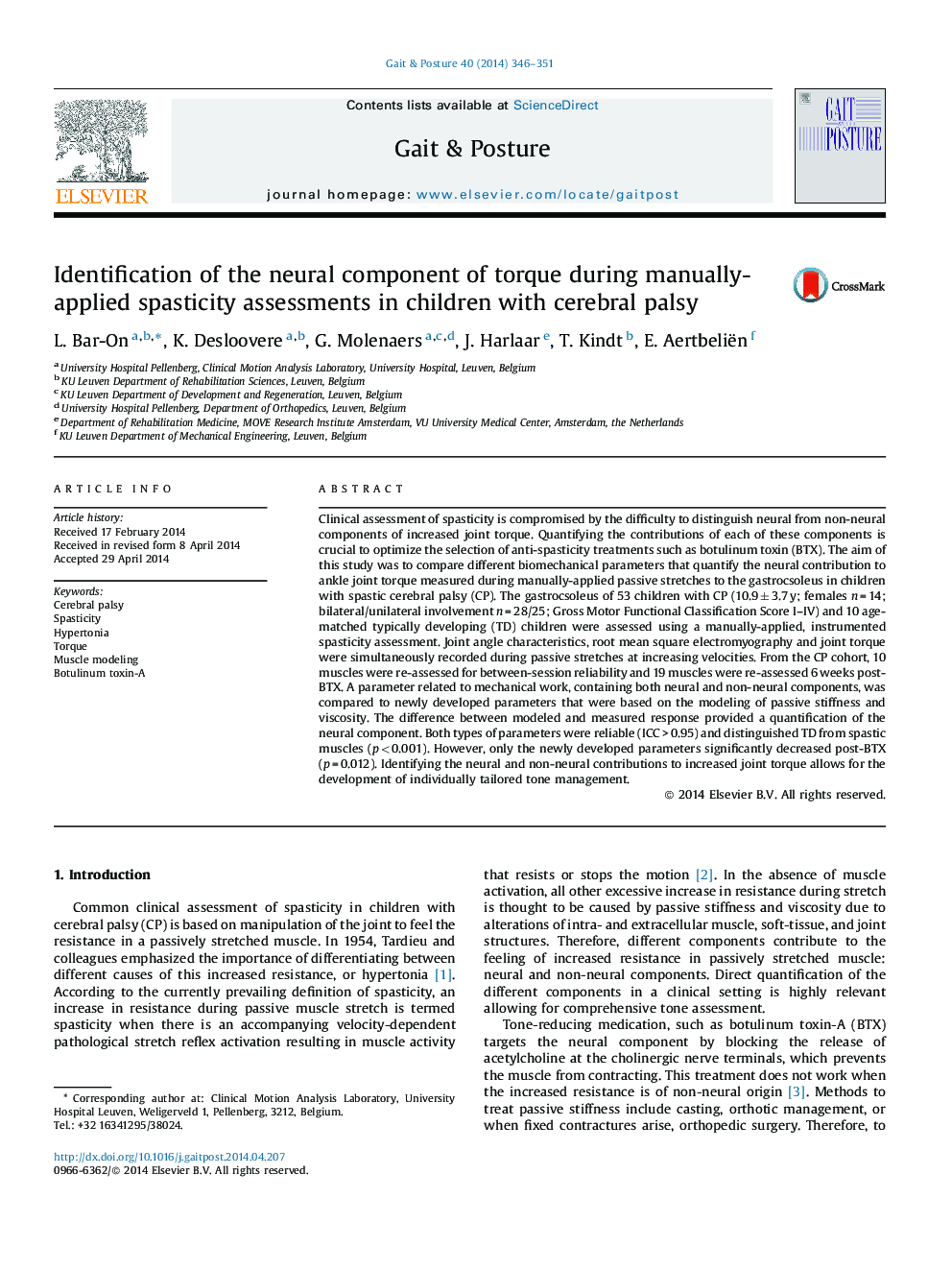| کد مقاله | کد نشریه | سال انتشار | مقاله انگلیسی | نسخه تمام متن |
|---|---|---|---|---|
| 4056191 | 1265644 | 2014 | 6 صفحه PDF | دانلود رایگان |
• Quantification of the neural torque component of ankle hypertonia.
• Comparison of the neural torque component between children with CP and control.
• Sensitivity of the neural torque component to treatment with botulinum toxin-A.
Clinical assessment of spasticity is compromised by the difficulty to distinguish neural from non-neural components of increased joint torque. Quantifying the contributions of each of these components is crucial to optimize the selection of anti-spasticity treatments such as botulinum toxin (BTX). The aim of this study was to compare different biomechanical parameters that quantify the neural contribution to ankle joint torque measured during manually-applied passive stretches to the gastrocsoleus in children with spastic cerebral palsy (CP). The gastrocsoleus of 53 children with CP (10.9 ± 3.7 y; females n = 14; bilateral/unilateral involvement n = 28/25; Gross Motor Functional Classification Score I–IV) and 10 age-matched typically developing (TD) children were assessed using a manually-applied, instrumented spasticity assessment. Joint angle characteristics, root mean square electromyography and joint torque were simultaneously recorded during passive stretches at increasing velocities. From the CP cohort, 10 muscles were re-assessed for between-session reliability and 19 muscles were re-assessed 6 weeks post-BTX. A parameter related to mechanical work, containing both neural and non-neural components, was compared to newly developed parameters that were based on the modeling of passive stiffness and viscosity. The difference between modeled and measured response provided a quantification of the neural component. Both types of parameters were reliable (ICC > 0.95) and distinguished TD from spastic muscles (p < 0.001). However, only the newly developed parameters significantly decreased post-BTX (p = 0.012). Identifying the neural and non-neural contributions to increased joint torque allows for the development of individually tailored tone management.
Journal: Gait & Posture - Volume 40, Issue 3, July 2014, Pages 346–351
